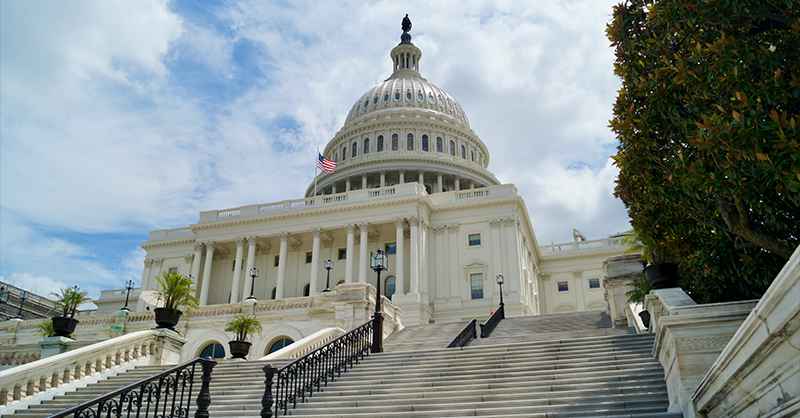US regulators to take on mid-size bank rules after SVB failure, but may be limited by 2018 law
15 March 2023 22:21 by Neil Roland

Key US policymakers will likely try to bolster liquidity, stress test and resolution-plan rules for mid-sized banks on the heels of the Silicon Valley Bank failure, but they'll be limited in what they can do by a 2018 law that still has bipartisan Capitol Hill support.
Both Senate sponsors of the Economic Growth, Regulatory Relief and Consumer Protection Act of 2018, Republican Mike Crapo and Democrat Mark Warner, continue to back the legislation that rolled back Dodd-Frank Act protections for mid-sized banks.
“This event was a basic supervisory oversight failure of poor financial risk-management strategies,” Crapo said of the Silicon Valley Bank collapse Monday, a view similar to that of the Bank Policy Institute, the main US banking group.
And while Democratic senators such as Elizabeth Warren have called for a repeal of the 2018 law, the House is controlled by Republicans.
Following a Federal Reserve review of its possible lapses in the Silicon Valley Bank collapse, policymakers will likely focus not only on beefing up its bank supervision but on restoring requirements for mid-sized banks. That review is due to be released May 1.
Stricter rules are sure to be recommended for the 17 banks with between $100 billion and $250 billion in assets as of Dec. 31, 2022. Firms range from MUFG Union Bank in San Francisco, with $104.4 billion in assets, to Citizens Bank in Providence, Rhode Island, with $226.4 billion.
Fed, FDIC
During the Trump administration, the Federal Reserve and Federal Deposit Insurance Corporation went beyond their 2018 legislative mandate in relaxing requirements for banks with $100 billion to $700 billion in assets. That regulatory push was led by the Fed vice chairman for supervision, Randal Quarles. His successor, Michael Barr, is leading the current Fed review.
Key decisionmakers in whether to go forward with rule proposals are likely to be Barr; Lael Brainard, President Joe Biden’s top economic adviser as head of the National Economic Council; Martin Gruenberg, head of the Federal Deposit Insurance Corporation; and Treasury Secretary Janet Yellen.
Barr, Brainard and Gruenberg were vocal in criticizing the 2019 Fed and FDIC rules.
When the Fed proposed lenient liquidity, stress and resolution-plan rules in late 2018, Barr told Politico: “I think this is a tragic mistake that will significantly increase risk in the financial system, for a modest gain in the reported earnings of very large financial institutions, which are already doing very well. It increases the risk of bank runs and reduces the real capital cushion available to absorb losses.”
Brainard was a Fed governor who dissented from its 2019 rule.
“Today’s actions go beyond what is required by law and weaken the safeguards at the core of the system before they have been tested through a full cycle,” she said at the time. “At a time when the large banks are profitable and providing ample credit, I see little benefit to the banks or the system from the proposed reduction in core resilience that would justify the increased risk to financial stability in the future".
Gruenberg was an FDIC member and the sole Democrat on the board at the time it adopted a rule similar to that of the Fed’s.
“Given the risks associated with the failure of large regional banks, these measures are unwarranted and misguided,” he said in his 2019 dissent. “They only increase the challenges posed by the resolution of these institutions and the potential for disorderly failure, and disregard the lessons of the financial crisis”.
Homing in
Both Brainard and Gruenberg homed in on the weakening of liquidity, stress test and "living will" requirements for mid-sized banks.
The liquidity coverage ratio that was diluted made banks hold an amount of high-quality liquid assets ample to fund cash outflows for 30 days.
In a prescient comment, Brainard said: “The liquidity insolvency of a large banking institution with $250 to $700 billion in assets – or even $100 to $250 billion – would pose substantial risk of loss to the deposit insurance fund, especially since a distressed acquisition of a large banking institution by one of the largest domestic banking institutions is a less plausible option today than previously.”
Both Silicon Valley Bank and Signature Bank had between $100 billion and $250 billion in assets. The FDIC seized both rather than sell them to another firm.
Brainard estimated that the Fed’s 2019 rule would reduce the liquidity coverage ratio by 15 percent for banks with $250 billion to $700 billion in assets.
For banks in the $100 billion to $250 billion category, the rule eliminated their liquidity coverage ratio, she said, a $167 billion reduction in the requirement.
As for stress tests, banks with assets of $100 billion to $250 billion no longer had to conduct company-run stress tests. Tests overseen by regulators were to be conducted every two years rather than every year.
Rules for ailing banks to file “living wills,” or plans for unwinding in bankruptcy, were eliminated for holding companies with banks with $100 billion to $250 billion in assets.
Banks with $250 billion to $700 billion in assets had to submit full plans just once every six years rather than annually, as was previously the case.
Related Articles
No results found
